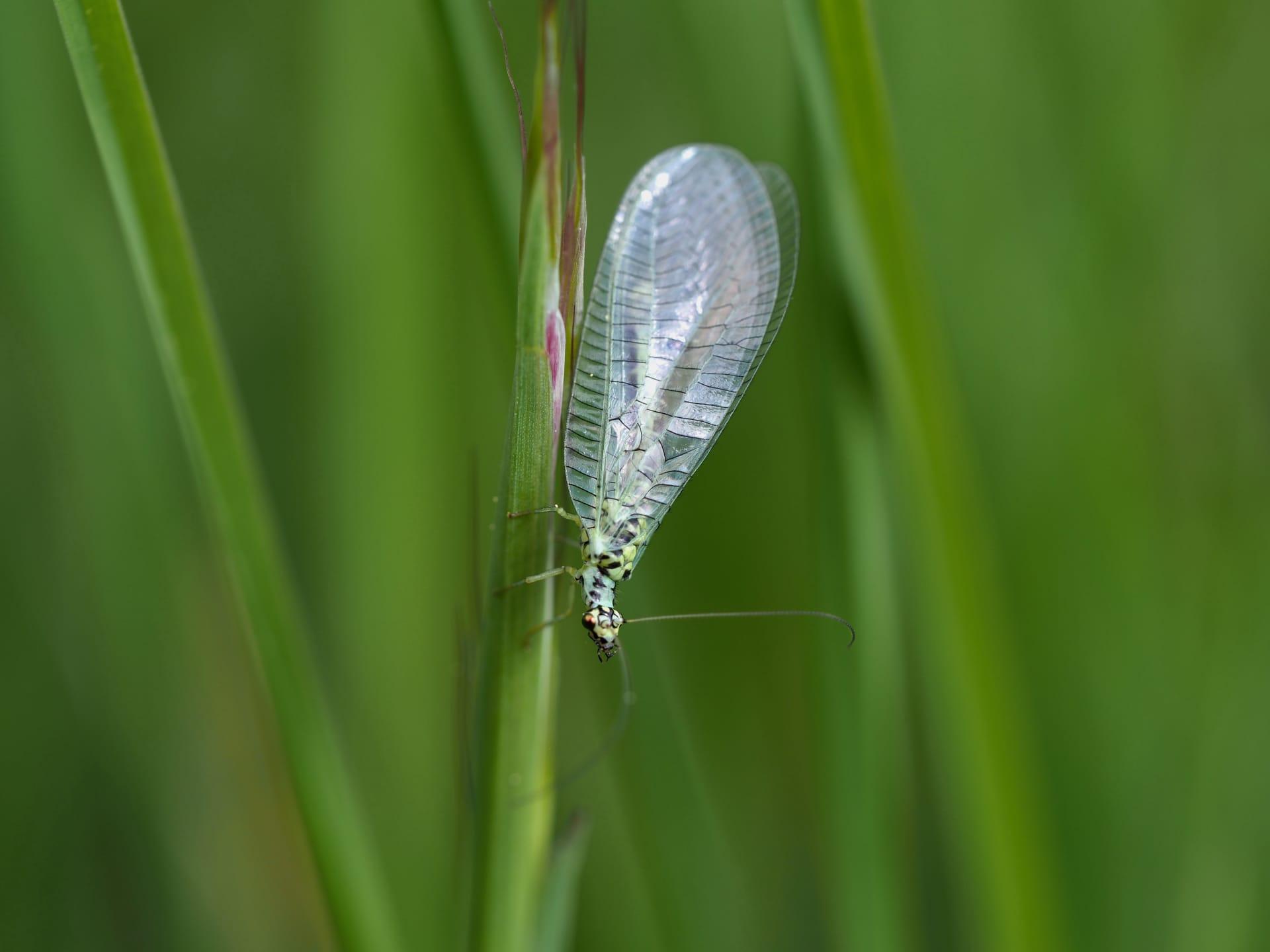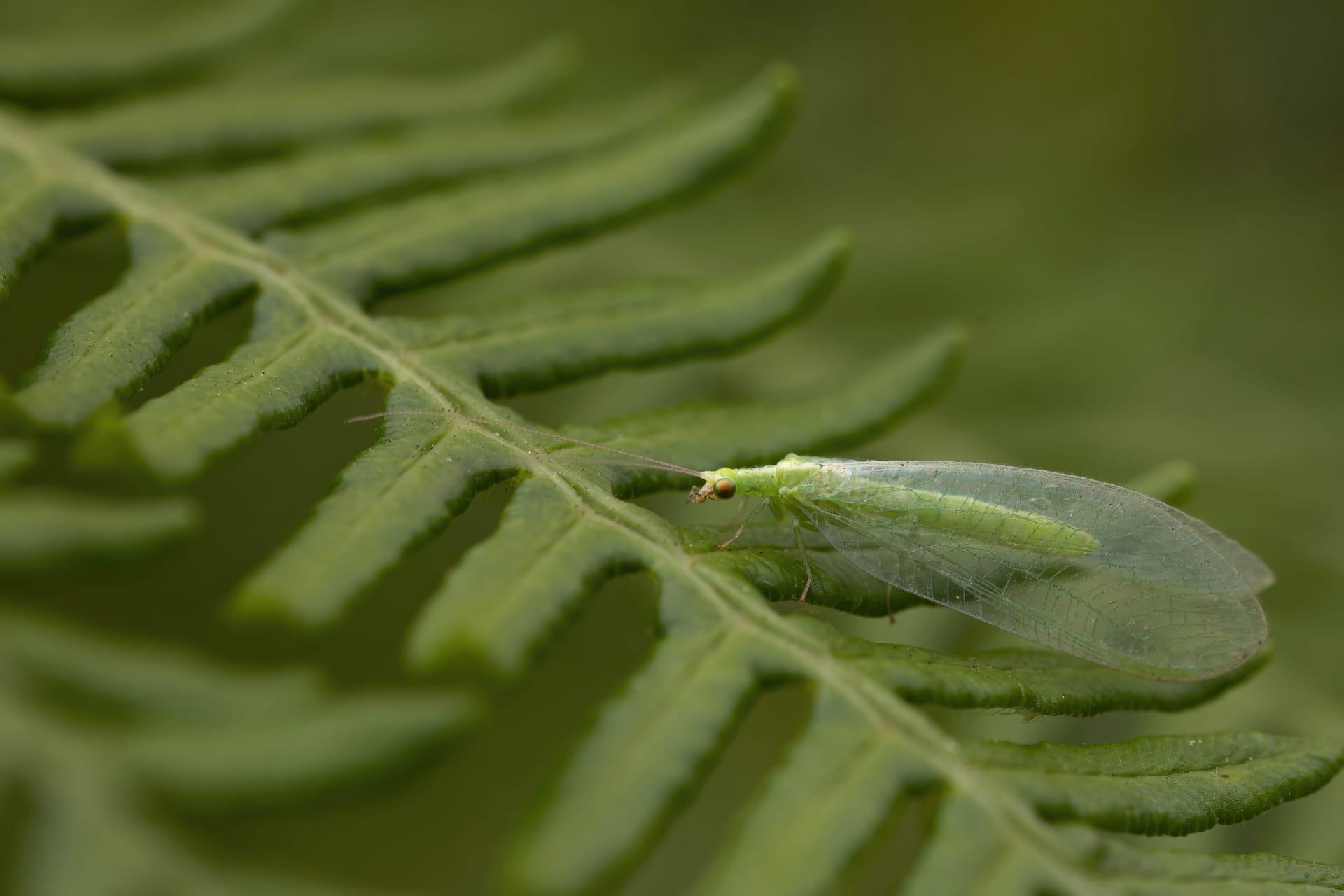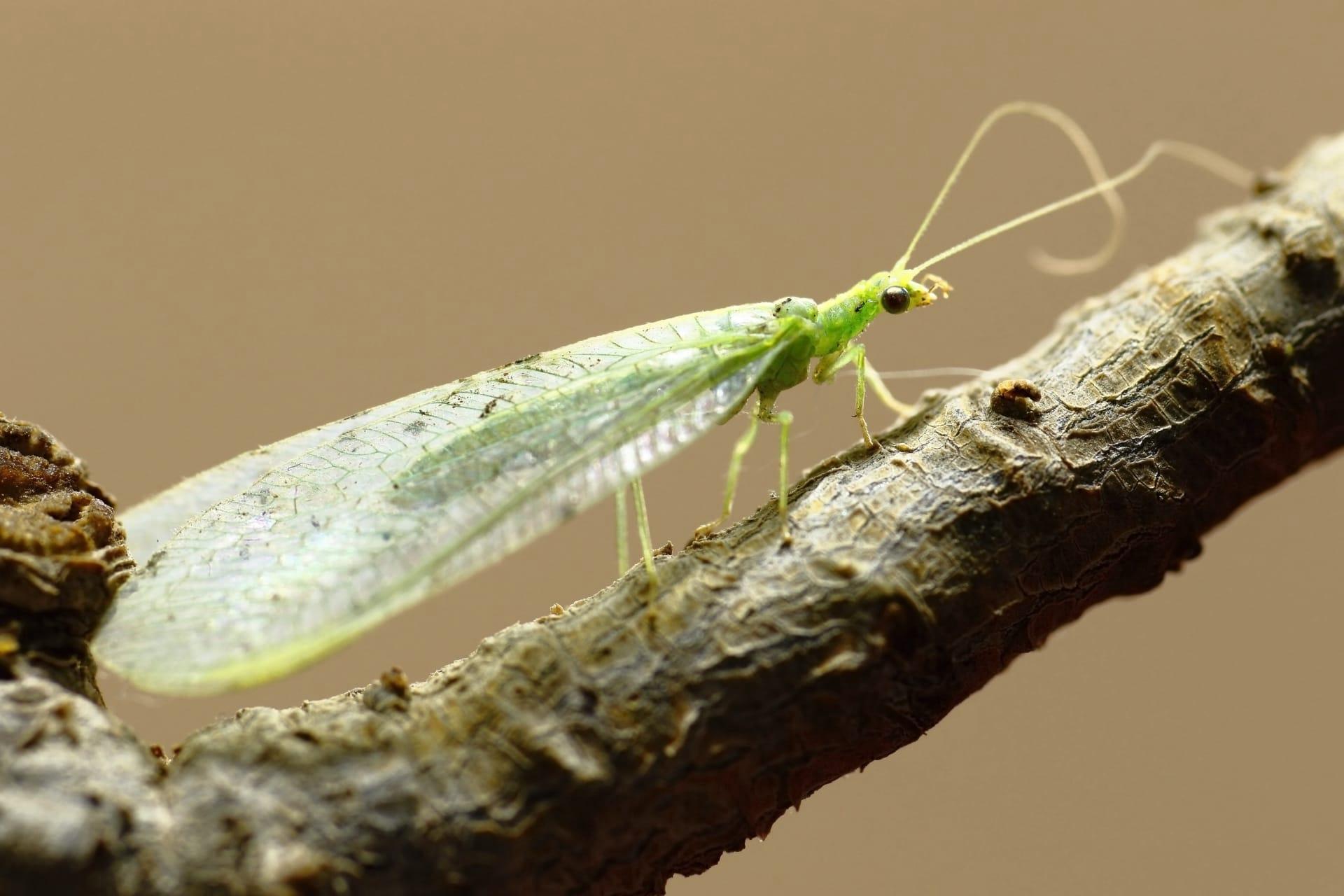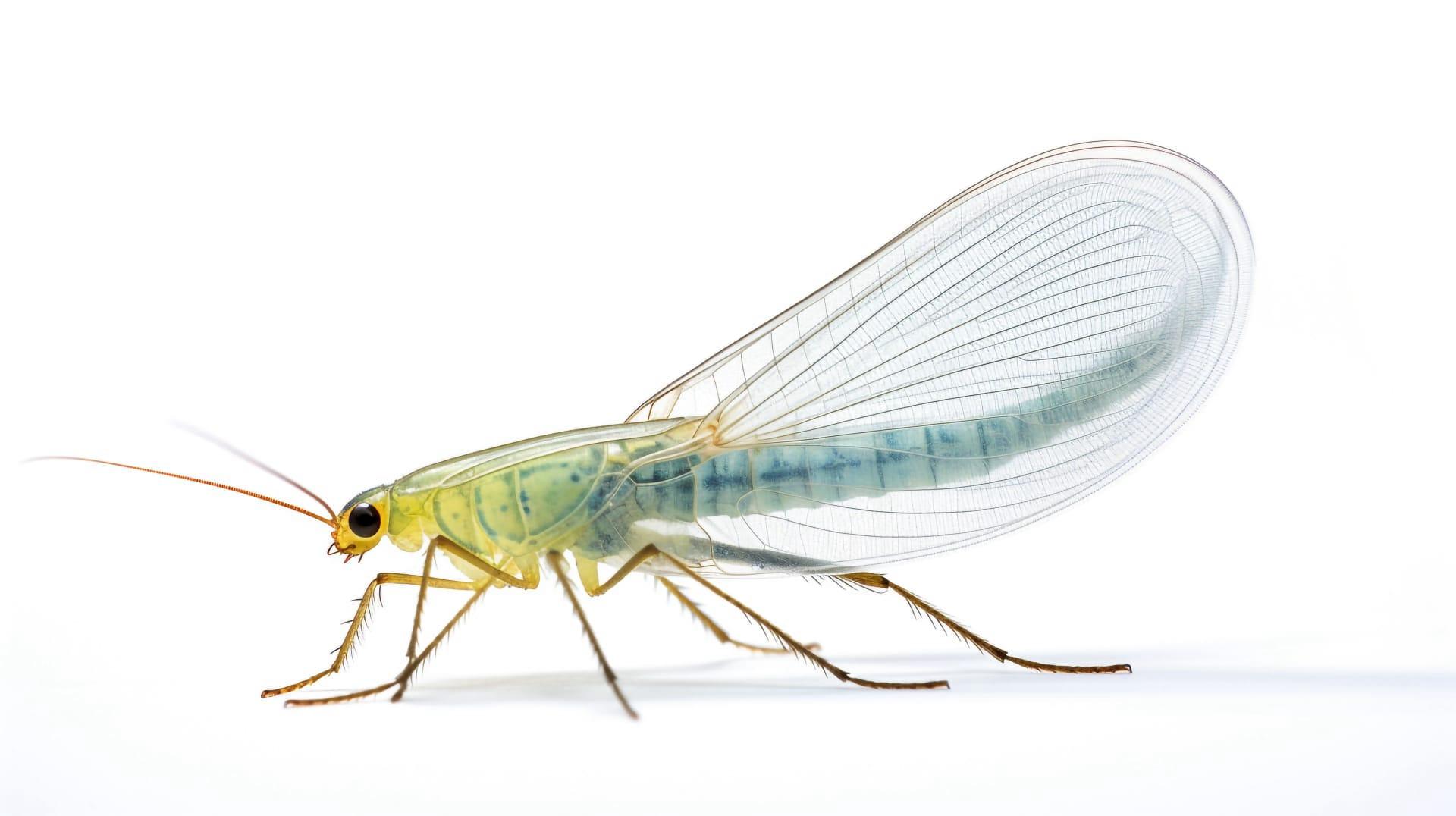Green Lacewing Characteristics
- Home /
- Mini Encyclopedia /
- Animal /
- Green Lacewing Characteristics
1
The Green Lacewing, a fascinating insect, typically measures about 0.6 to 0.8 inches (1.5 to 2 cm) in length, flaunting delicate, transparent wings that span up to 1.2 inches (3 cm). Its body, slender and elongated, exhibits a striking green hue, living up to its name. These insects have a lifespan that varies depending on environmental factors, but they usually live for about 4 to 6 weeks in their adult form.
One of the most remarkable features of the Green Lacewing is its eyes. These are large, compound eyes, known for their bright, golden color and excellent vision. This is vital for the lacewing as it hunts for food, mainly aphids and other small insects. The eyes provide them with a broad field of vision and the ability to detect movement quickly, essential for both hunting and evading predators.

2
Question: "What do Green Lacewings eat and how does their diet benefit gardens and crops?"
Answer: Green Lacewings are voracious predators of many common garden pests, especially aphids, mites, and caterpillars. An adult lacewing can consume up to 60 aphids per hour, making them invaluable in natural pest control. Their larvae, often called "aphid lions," are even more effective, consuming hundreds of pests weekly. This diet helps maintain the ecological balance in gardens and agricultural fields, reducing the need for chemical pesticides and supporting sustainable farming practices.

3
The movement of Green Lacewings is characterized by their elegant and fluttery flight. They are nocturnal insects, actively flying in search of prey during the night. Their flight is relatively slow and meandering, which helps them in carefully scanning plants for food.
When it comes to feeding, Green Lacewings are predators in both their larval and adult stages. The larvae are particularly aggressive, using their mandibles to seize and devour soft-bodied insects. Adults, while still predacious, also supplement their diet with nectar and pollen. This mixed diet helps them thrive in various environments, from gardens to fields.

4
Green Lacewings are adaptable insects, found in a variety of environments including gardens, forests, agricultural fields, and wetlands. They prefer habitats with abundant vegetation, as it provides them with both food sources and protection from predators. The presence of water bodies is also favorable as it supports a rich ecosystem for them to thrive in.
The reproduction of Green Lacewings is an intriguing process. Females lay their eggs on the tips of thin, hair-like stalks attached to plant leaves, a strategy to protect them from predators and cannibalism by other larvae. The eggs hatch in about 4 to 6 days. The larvae go through several stages of development, during which they are active predators, before pupating and emerging as adults to continue the cycle.

5
Book: "The Secret Life of Green Lacewings: Natural History and Pest Control Potential," authored by Dr. Emily Hart, published in the United States in 2018. This book delves into the ecological significance of Green Lacewings, emphasizing their role in natural pest control. Hart combines scientific research with practical guidance on how to attract and sustain these beneficial insects in gardens and farms.
Book: "Wings of Green: Exploring the World of Lacewings," by British entomologist Richard Dawes, released in 2020. Dawes explores the diverse species within the lacewing family globally, detailing their behavior, lifecycle, and habitats. The book is richly illustrated, providing readers with a visual journey into the world of these delicate, yet crucial, insects.